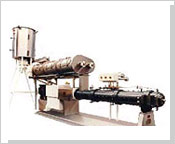 In this process, unlike conventional extrusion, which can only be operated at high temperatures to soften the material, impact extrusion uses cold metal billets that are extruded under high pressure. A metal slug can be forced into any shape with a single stroke.
In this process, unlike conventional extrusion, which can only be operated at high temperatures to soften the material, impact extrusion uses cold metal billets that are extruded under high pressure. A metal slug can be forced into any shape with a single stroke.
The process works like this, a well lubricated slug is placed inside a die cavity and struck once through a punch. As a result of this high force, the material flows back around the punch, through an opening between the die and the punch.
This process is best suited for soft materials such as lead, aluminium or tin. It Is essentially a single-stroke process, but can be repeated at high speeds to obtain precise parts matching quality specifications. The extruded parts are trimmed to length. Secondary operations like machining, hole punching, or machining can then be performed. Finally the trimmed impact extrusions may be cleaned in Trichloroethylene or an aqueous-based wash.
Types of Impact Extrusion:Depending upon the principal direction in which the metal is to be flown upon hit by the impacting pressure, Impact Extrusion can be Reverse, Forward or Combination Impacting.
 Reverse Impacting
Reverse Impacting
Here specific shell configurations are created with extruded side walls and a forged base. The cold metal billet inside the die cavity is struck by a punch or ram. The metal is forced to flow upward around the punch through an opening between the die and the punch. The opening between the die and the punch ascertains the wall thickness of the shell. The base thickness relies on the adjustment of the bottom position of the punch ram. This should ideally be 15% greater than the side wall thickness.
Application of Reverse Impacting:
 Products include a number of configurations like internal or external rib, multi-shell walls, square and circular, oval, rectangular and other cross sections.
Products include a number of configurations like internal or external rib, multi-shell walls, square and circular, oval, rectangular and other cross sections.
- Forward Impacting It is also referred to as the Hooker Process, in its working it closely resembles the conventional extruding. Though the billet is as usual placed in the die, but the force of the punch pushes the metal through the orifice of the die. This causes the metal to flow in the direction of punch. There is no escaping of the metal backwards as the punch fits to the wall of the die very closely.
- Application of Forward Impacting:
Products include straight, round, non-round, and ribbed rods, thin walled tubing with one or both ends open, and with tapered or parallel side walls.  Combination ImpactingThis process punches the combination of forward and reverse metal flows. This method is best suited for the formation of complex-shaped arts. Here the metal is allowed to flow upward into the punch, until the cavity is filled. This is done by incorporating a lower punch and a cavity in the upper punch. Punch movements causes forward extrusion of the remaining metal and results in the formation of a web.
Combination ImpactingThis process punches the combination of forward and reverse metal flows. This method is best suited for the formation of complex-shaped arts. Here the metal is allowed to flow upward into the punch, until the cavity is filled. This is done by incorporating a lower punch and a cavity in the upper punch. Punch movements causes forward extrusion of the remaining metal and results in the formation of a web.
Advantages of Impact Extrusion
- It reduces the material cost, as the impacting process typically uses 100% of the metal slug so nothing is wasted
- Low tooling costs
- Long tool life
- High production output
- Economic material usage
- Increased physical properties
- Corrosion resistance
- High degree of forming in single step
- Low weight
- Highly uniform grain alignment
- Eliminates machining, either completely or significantly
Impact Extrusion Vs Other Processes Impact Extrusion Versus Forging
Compared to Forging, Impact Extrusion offers:
- Lighter products
- Minimum draft surfaces
- Closer dimensional tolerances
Impact Extrusion Versus Casting Compared to Casting, Impact Extrusion offers:
- Thin wall parts may be produced by Impact Extrusion, which is difficult to cast.
- If design is within the ambits of impacting, then parts light in weight, strong and with smooth surfaces can be produced rather than be cast.
Impact Extrusion Versus Welding
Compared to welding, Impact Extrusion offers:
- Entire elimination of Leaks and Connection Failures Production of Subassemblies possible in one piece quickly and at a reduced labour cost.
